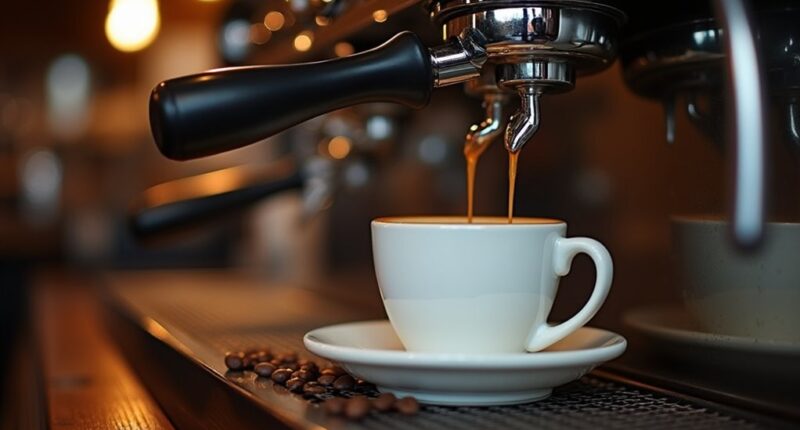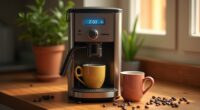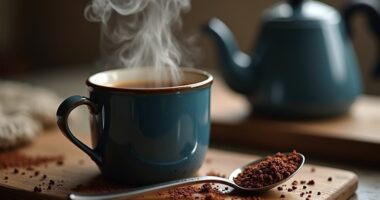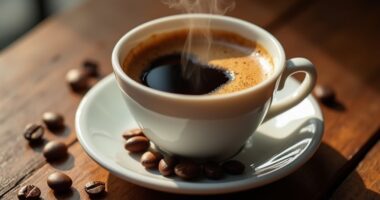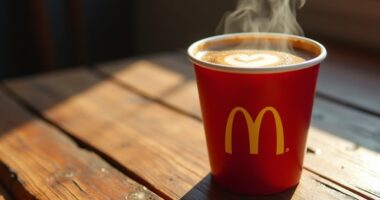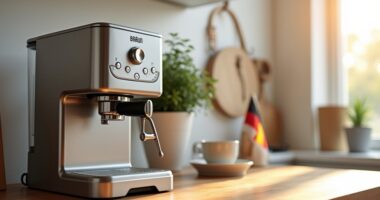So, here’s the scoop on espresso shots! You can safely enjoy up to six shots a day without stressing your heart out. That’s like one for each of your daily adventures, right? Just remember, keep an eye on how your body feels—too much can make you jittery. And hey, why stop at just counting shots when there’s a whole world of caffeine knowledge out there waiting for you?
At a Glance
- There is no specific legal limit for espresso shots; caffeine consumption guidelines focus on overall daily intake.
- The safe daily caffeine limit for adults is 400 milligrams, roughly equating to six espresso shots.
- Individual tolerance to caffeine varies, influencing how many espresso shots one can safely consume.
- Monitoring personal health responses is vital, as symptoms of overconsumption can occur with excessive intake.
- Spreading espresso consumption throughout the day helps prevent exceeding caffeine limits and experiencing adverse effects.
Understanding Caffeine Guidelines for Adults
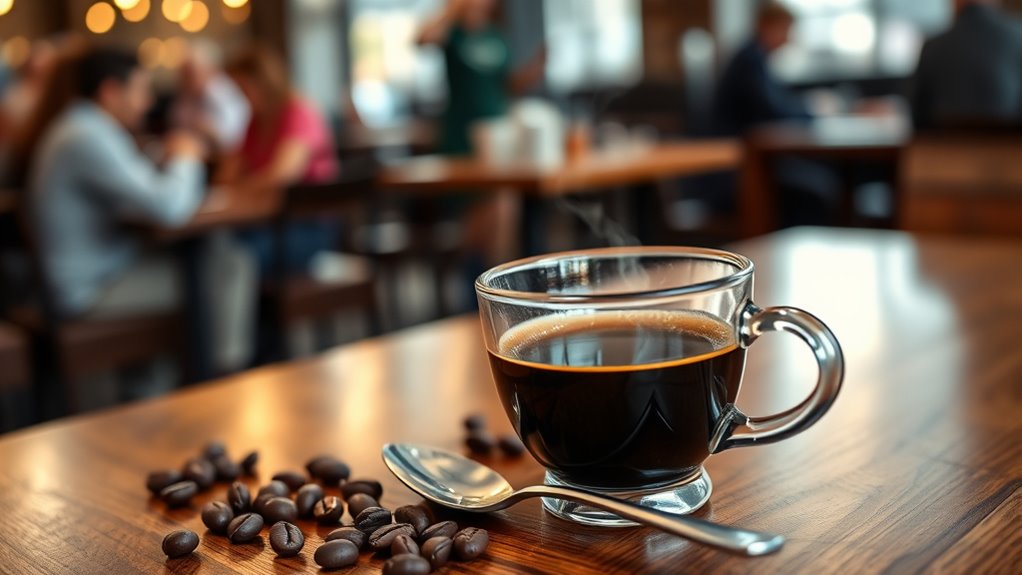
When it comes to caffeine, especially for adults, it’s like walking a tightrope—too little, and you might feel like a sleepy sloth; too much, and you’re bouncing off the walls like a supercharged squirrel!
The FDA says you can safely enjoy up to 400 milligrams daily, which is about four cups of coffee. But remember, everyone’s caffeine metabolism is different. Your individual tolerance might mean that a couple of cups perk you up, while others feel jittery. Additionally, the best tasting ground coffee can provide a delightful experience while helping you stay within your daily caffeine limits.
Stay mindful, and listen to your body. Finding that sweet spot is crucial for keeping the good vibes flowing without the crazy side effects!
Caffeine Content in Espresso Shots
Espresso shots pack a serious caffeine punch, making them a favorite for those seeking a quick boost. Did you know that caffeine content can vary? Here’s a quick look:
| Type of Espresso | Caffeine Content (mg) |
|---|---|
| Standard Shot | 64 |
| Starbucks Shot | 75 |
| Double Shot | 126-150 |
| Latte/Cappuccino (single) | 75 |
| Mocha (single) | 90 |
Espresso variability comes from factors like bean type and brewing pressure. Additionally, the best automatic espresso machine can help you achieve a consistent flavor profile and caffeine extraction. So, the next time you sip, remember: caffeine extraction can change your espresso experience! Enjoy your jolt!
Risks of Exceeding Caffeine Limits
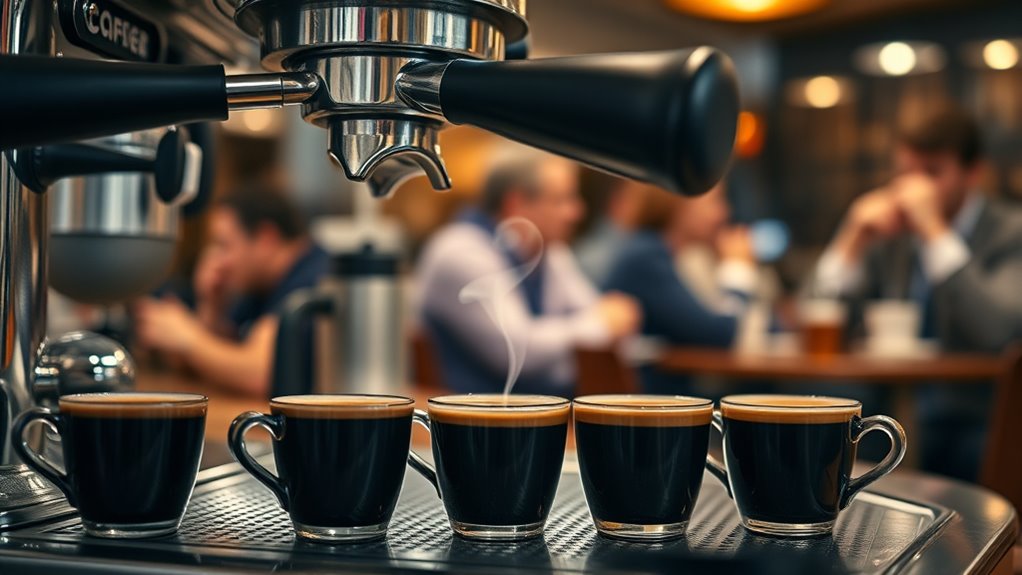
Exceeding caffeine limits can sneak up on you faster than you’d think, especially if you’re chugging those espresso shots like they’re water!
Trust me, you don’t want to mess with caffeine toxicity. Here are some overdose symptoms to watch out for:
- Agitation and confusion
- Rapid heartbeat or dizziness
- Nausea and gastrointestinal distress
These effects can seriously cramp your style, turning that caffeine buzz into a chaotic ride. Additionally, different coffee beans can influence caffeine content, making it important to know what you’re sipping on.
Lethal Caffeine Dosage and Toxicity
You might think that coffee’s just a delicious pick-me-up, but let me tell you, it can turn dark pretty quickly if you’re not careful.
A caffeine overdose isn’t just a buzzkill; it can be deadly. Toxic symptoms like jitters and nausea can kick in with just 15 mg/L. Imagine gulping down around 133 espresso shots in one go—yikes!
Lethal doses hover around 10 grams, and if you’ve got heart issues, even less can be risky. Choosing low acid coffee can be a safer option for those sensitive to caffeine’s effects.
Typical Espresso Shot Sizes and Standards
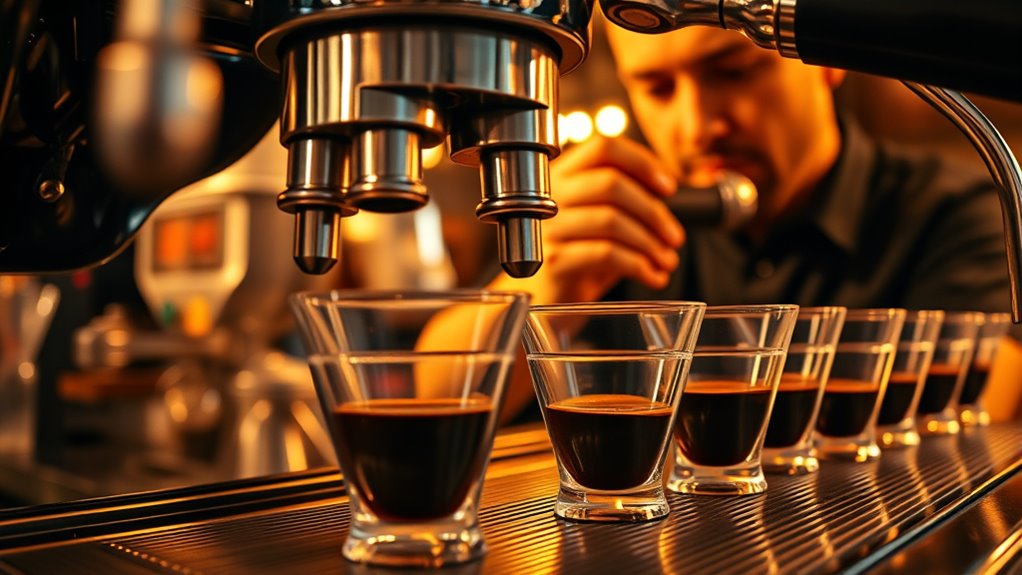
When it comes to brewing that perfect cup of espresso, knowing the typical sizes and standards can make all the difference!
Here’s a quick rundown of what you need to know:
- Single Shot: About 1 fluid ounce, using 7 to 9 grams of coffee.
- Double Shot: Typically 2 fluid ounces, requiring 14 to 18 grams of coffee.
- Espresso Shot Variations: Explore ristretto, lungo, and more! Understanding espresso preparation techniques can elevate your coffee game, making each sip a delightful experience.
Mastering these espresso preparation techniques can elevate your coffee game, making each sip a delightful experience.
Safe Consumption Patterns for Espresso
Now that you’re all set with the basics of espresso shot sizes, let’s chat about how to enjoy that rich brew without going overboard.
Most adults can sip up to six shots daily, reaping those awesome espresso benefits without the jitters. But hey, listen to your body; if you feel anxious or restless, it might be time to explore espresso alternatives like herbal teas or decaf. Additionally, opting for low acid organic coffee can help reduce any potential discomfort from acidity in traditional coffee.
Spread your shots throughout the day, and don’t chug them all at once! Remember, moderation is key, so you can keep enjoying your favorite brew while feeling great and connected with friends.
Cheers!
Regulatory Status of Caffeine in Beverages
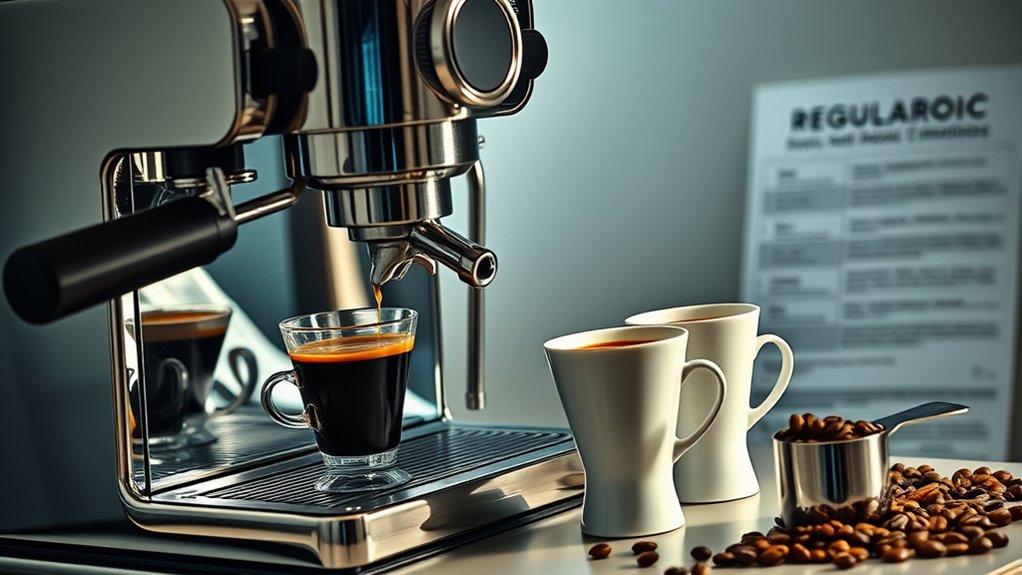
Caffeine, that magical little pick-me-up we all love, has a bit of a reputation when it comes to regulations.
Here’s what you should know about caffeine regulations and beverage safety:
- In the EU, energy drinks over 150 mg/L must warn against consumption by kids and pregnant women.
- The FDA in the US wants you to stay under 400 mg daily, but no specific limits exist.
- Some countries even ban energy drink sales to minors, like Lithuania!
- Additionally, many coffee brands are now promoting finest black coffee options that offer a rich flavor without excessive caffeine.
Educating Consumers on Caffeine Intake
You’ve probably heard the buzz about how much caffeine is in your favorite espresso, and let’s be honest, it can feel a bit overwhelming. With so many caffeine myths floating around, consumer awareness is key. Check out the table below to understand espresso’s caffeine content better:
| Type of Espresso | Caffeine (mg) | Recommended Limit (shots) |
|---|---|---|
| Single Shot | 64 | 6 |
| Double Shot | 126 | 3 |
| Three Shots | 189 | 2 |
In addition to espresso, many coffee drinkers enjoy using non-dairy creamers to enhance their beverages.
